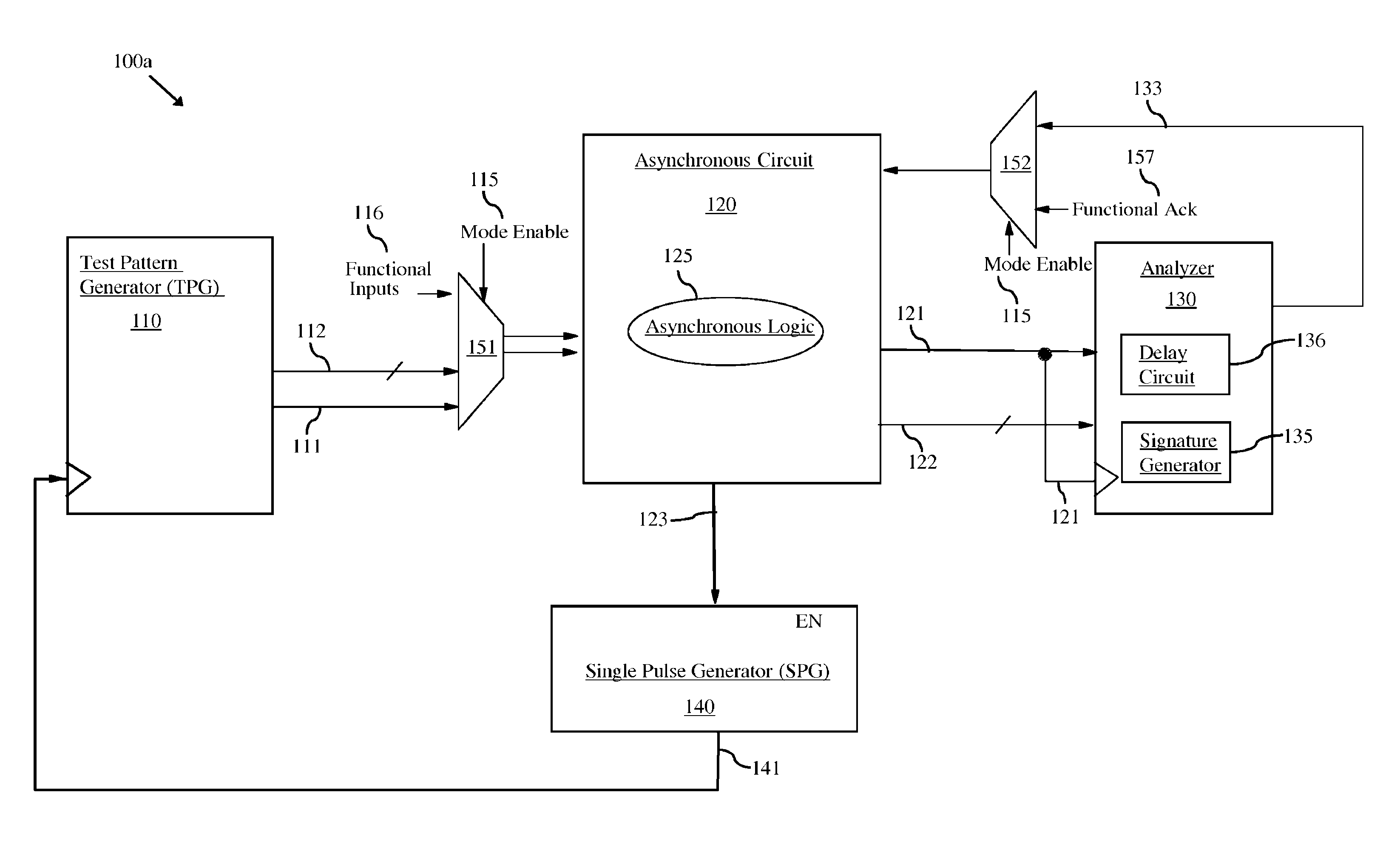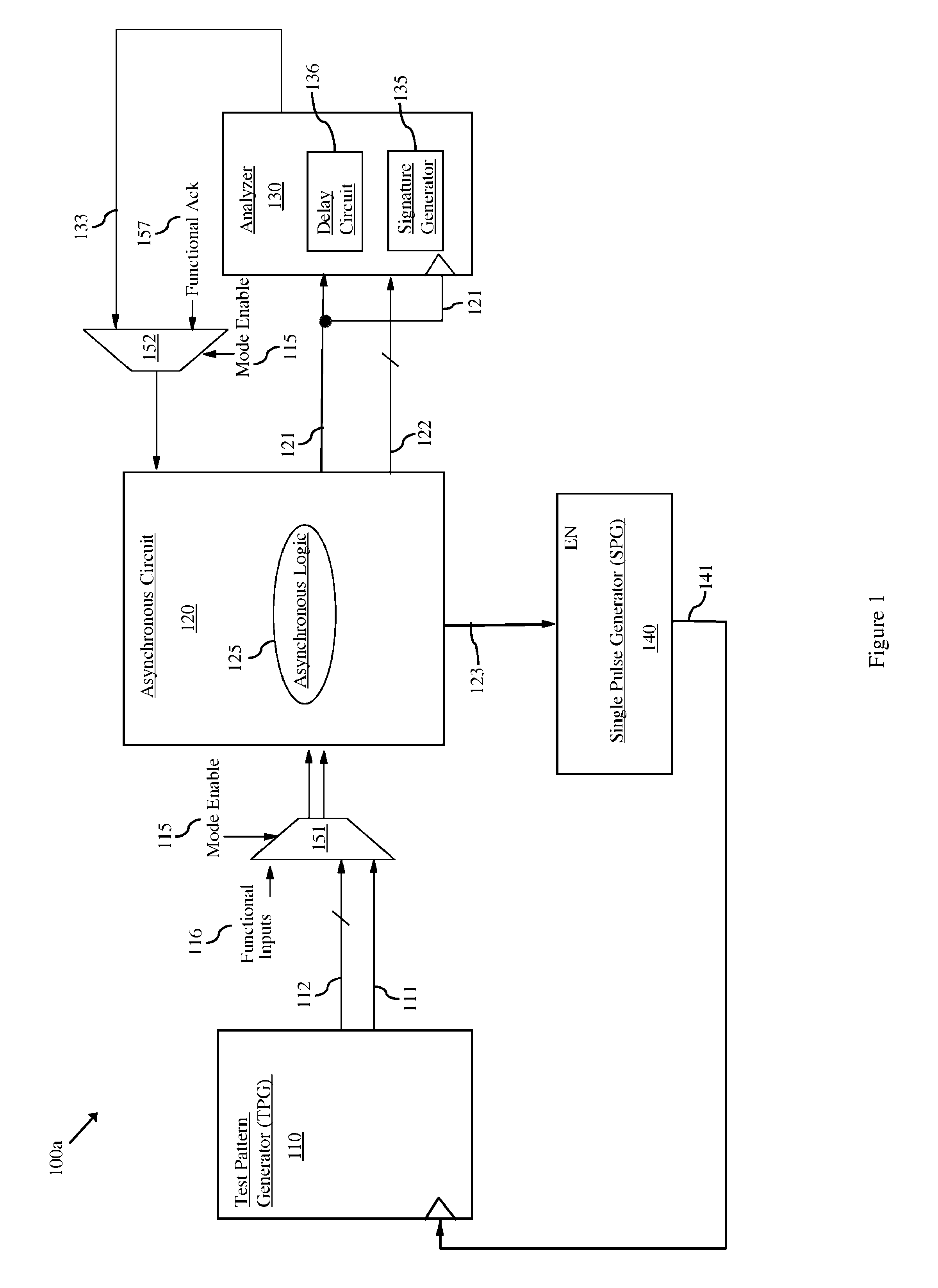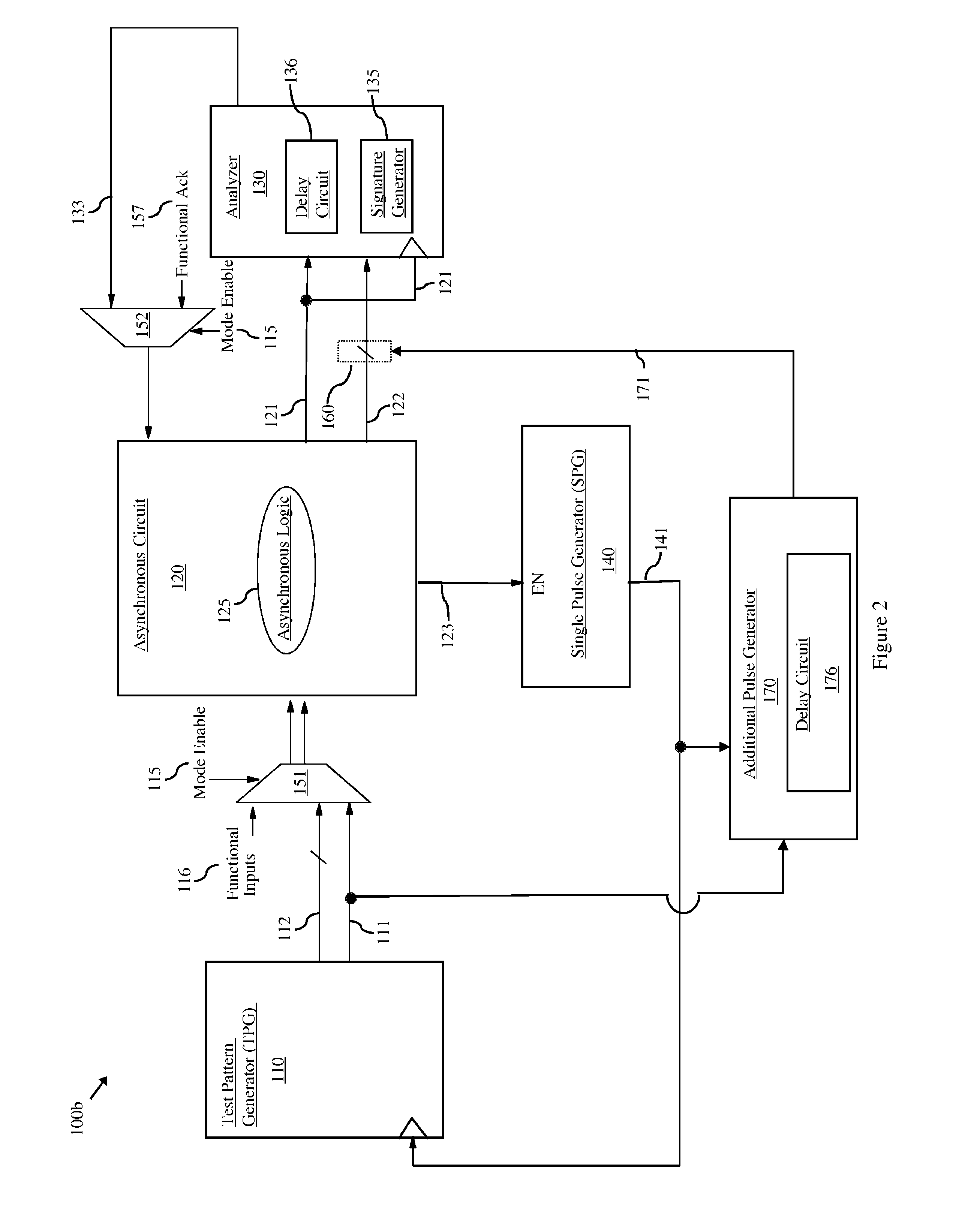Asynchronous circuit with an at-speed built-in self-test (BIST) architecture
a technology of built-in self-testing and asynchronous circuits, which is applied in the field of asynchronous circuits with built-in self-testing architectures, can solve the problems of relatively high cost, area and performance impacts of adding synchronous clocking to the circuit under tes
- Summary
- Abstract
- Description
- Claims
- Application Information
AI Technical Summary
Benefits of technology
Problems solved by technology
Method used
Image
Examples
Embodiment Construction
[0021]As mentioned above, in data processing, a pipeline typically refers to an integrated circuit having multiple stages of logic blocks (i.e., multiple stages of combinational logic) that are connected in series so that the output of one stage (i.e., data-out) is the input of the next stage (i.e., data-in). A synchronous pipeline refers to a pipeline in which registers are inserted between the various stages and synchronously clocked to ensure that any data being transferred between stages is stable. That is, between each of the stages in a synchronous pipeline, a register is clocked so that the data-in to the logic block of a receiving stage is the final data-out from the logic block of the transmitting stage. An asynchronous pipeline refers to a pipeline that uses a handshaking protocol, rather clocked registers, to pass data from one stage to the next stage. That is, a transmitting stage performs its logic function (i.e., propagates data through its logic block) and also assert...
PUM
 Login to View More
Login to View More Abstract
Description
Claims
Application Information
 Login to View More
Login to View More - R&D
- Intellectual Property
- Life Sciences
- Materials
- Tech Scout
- Unparalleled Data Quality
- Higher Quality Content
- 60% Fewer Hallucinations
Browse by: Latest US Patents, China's latest patents, Technical Efficacy Thesaurus, Application Domain, Technology Topic, Popular Technical Reports.
© 2025 PatSnap. All rights reserved.Legal|Privacy policy|Modern Slavery Act Transparency Statement|Sitemap|About US| Contact US: help@patsnap.com



